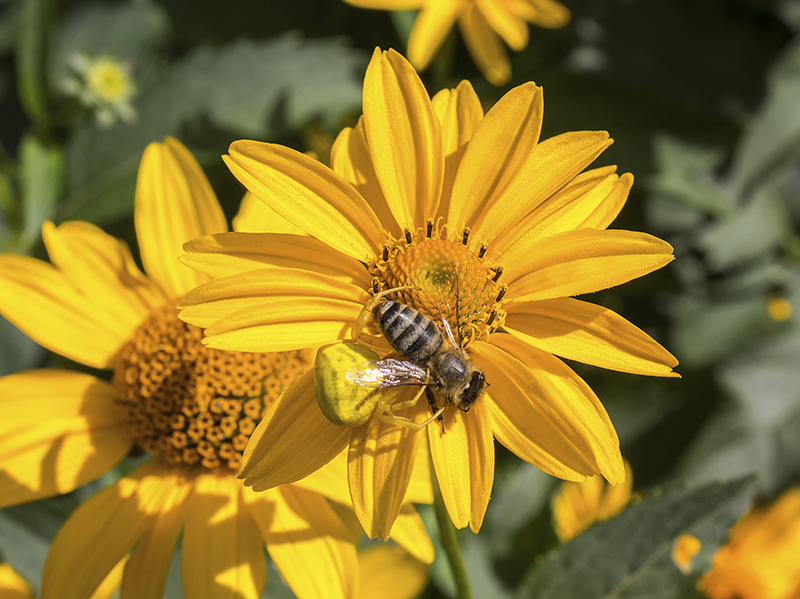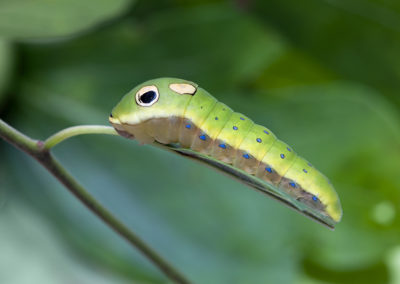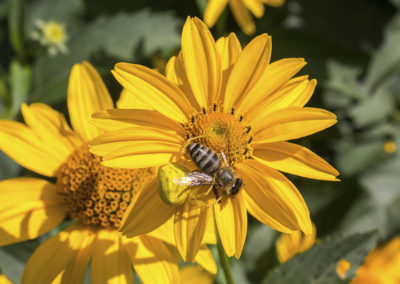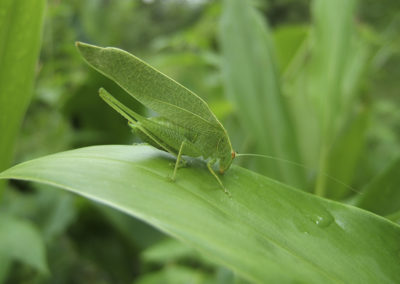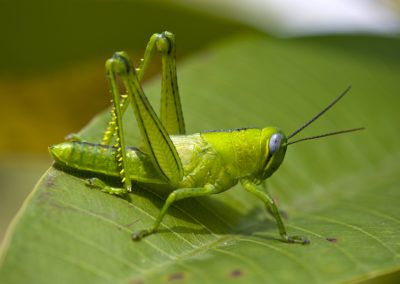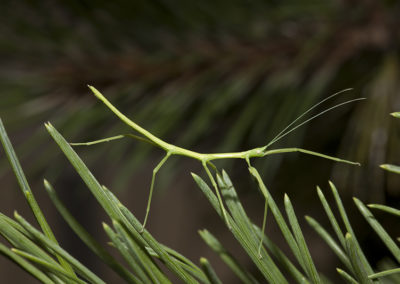Insect Camouflage
When you’re an insect, one of your major concerns is avoiding being eaten by birds, lizards and other insects. Those animals can’t eat you if they can’t find you, and camouflage is a great way that some insects hide from their predators.
Insects camouflage themselves to blend in with their environment, whether that means looking like a leaf, tree bark, or small stones on a river bottom. In some species, looking like a leaf means looking like an insect-eaten leaf! Other species can even change their camouflage on the go to match changes of color in their surrounding environment.
Here’s a brief look at some of the hard-to-spot insects you can find in Maryland—if you look closely enough.
Spicebush Swallowtail Caterpillar
For young spicebush swallowtail caterpillars, looking like bird droppings helps keep them from being eaten by birds. Each caterpillar is colored with a splotch of black and white that looks like something you’d wipe off your windshield.
Goldenrod Crab Spider
Wearing camouflage doesn’t have to mean looking drab. The goldenrod crab spider is bright yellow, sometimes with a dash of red. These spiders live inside flowers, often goldenrod, where they can grab a bee or butterfly as it tries to collect pollen using the long, crab-like legs that provide the second part of their name. While their venom is strong compared to many spiders, they don’t bite people and they do eat a lot of garden pests.
Katydid
Katydids get their name from their music, which they make by rubbing their wings together. They have many veins in their green wings, making them look leaf-like. This helps them hide during the day; they become active at night. Juvenile katydids have camouflage that helps them look like other, unappetizing insects.
Grasshopper
Grasshoppers are found almost everywhere around the world, not just in Maryland. They survive in many different kinds of habitats, including forests, meadows and deserts. Grasshopper come in a wide range of colors, such as green, gray, brown and ocher, depending on where they live. In Japan, they are considered a symbol of good luck.
Stick Insects
Stick insects, like the northern walkingstick, blend in with the branches of the trees and bushes they live on. Their appearance helps them avoid predators while they eat the foliage. Females lay a single egg at the time, on the ground. The nymphs climb up nearby plants once they’re hatched.
If you’re looking for more fun with insects, visit our friends at PestWorld for Kids for games, ebooks, crafts and more. Enjoy a fun and educational journey at Pest World for Kids.

